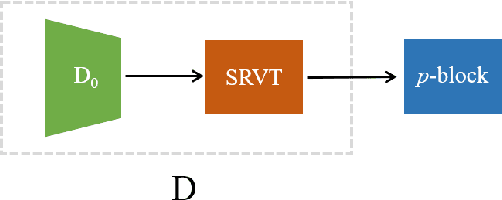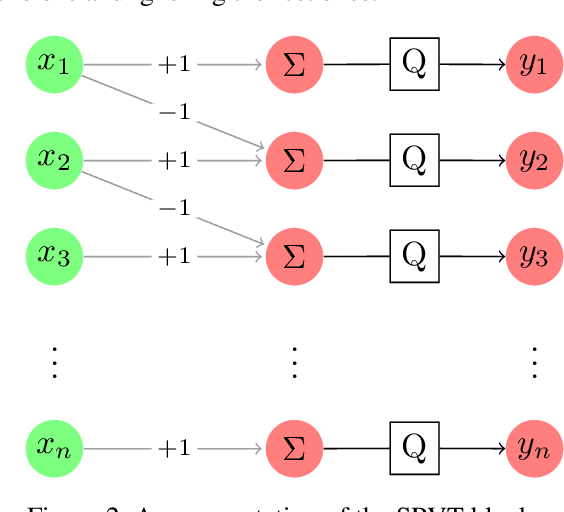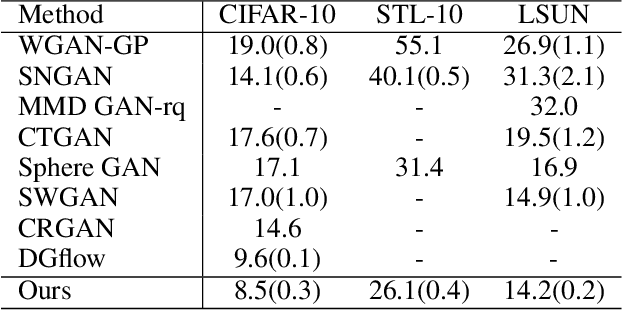AWGAN: Empowering High-Dimensional Discriminator Output for Generative Adversarial Networks
Paper and Code
Sep 08, 2021



Empirically multidimensional discriminator (critic) output can be advantageous, while a solid explanation for it has not been discussed. In this paper, (i) we rigorously prove that high-dimensional critic output has advantage on distinguishing real and fake distributions; (ii) we also introduce an square-root velocity transformation (SRVT) block which further magnifies this advantage. The proof is based on our proposed maximal p-centrality discrepancy which is bounded above by p-Wasserstein distance and perfectly fits the Wasserstein GAN framework with high-dimensional critic output n. We have also showed when n = 1, the proposed discrepancy is equivalent to 1-Wasserstein distance. The SRVT block is applied to break the symmetric structure of high-dimensional critic output and improve the generalization capability of the discriminator network. In terms of implementation, the proposed framework does not require additional hyper-parameter tuning, which largely facilitates its usage. Experiments on image generation tasks show performance improvement on benchmark datasets.
 Add to Chrome
Add to Chrome Add to Firefox
Add to Firefox Add to Edge
Add to Edge